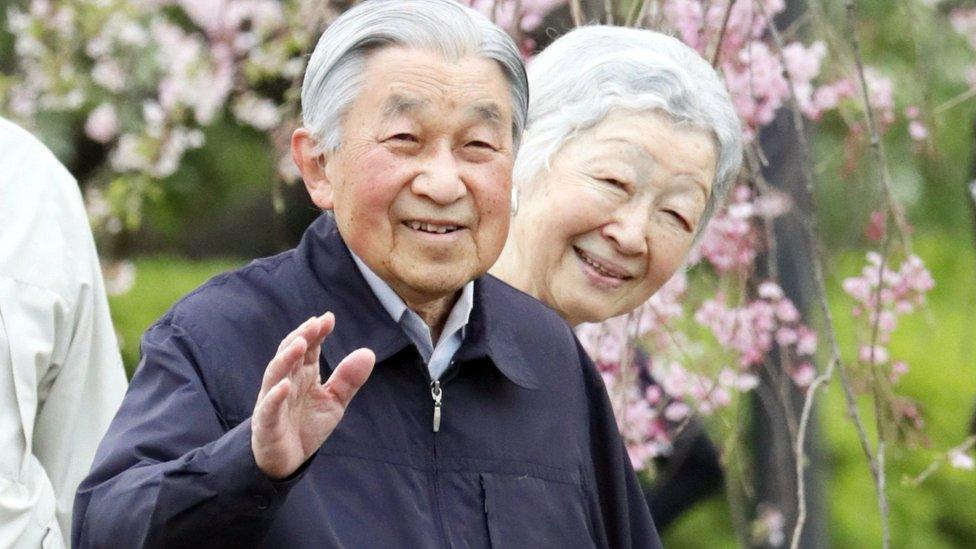The princess, the palace and the shrinking royal line
- Published
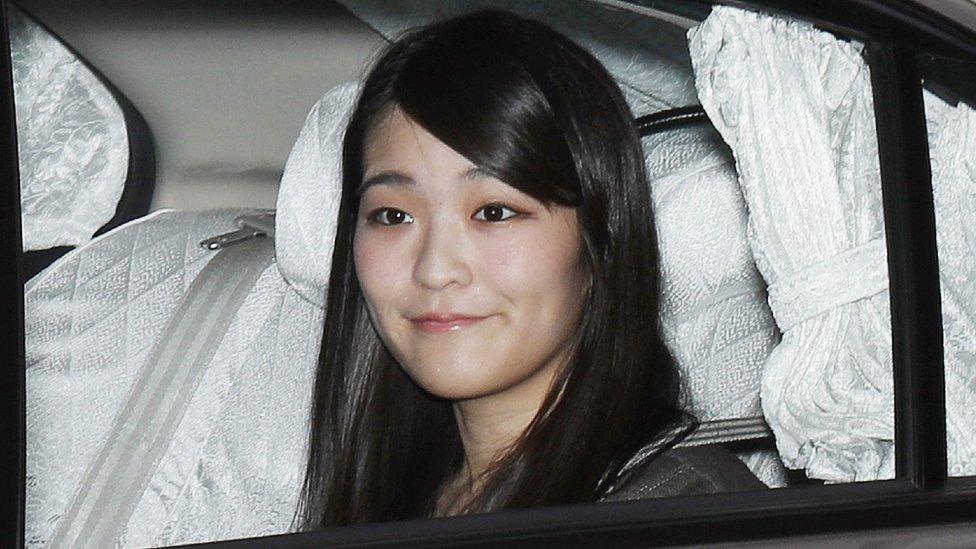
Princess Mako is getting married, but the law says she must lose her royal title
When the Japanese emperor's granddaughter marries law firm employee Kei Komuro next year, her life will undergo a dramatic change.
Princess Mako, 25, will lose her title and leave the cloistered imperial household to live with her husband in the outside world.
She will receive a one-off payment, after which the couple will be expected to provide for themselves. She will vote and pay tax, shop and do her own chores. If the couple have children, they will not be royal.
But her departure means one fewer to carry out official duties. It is also reigniting debate about the shrinking monarchy, the role women play in it and future succession.
Emperor Akihito, 83, has already indicated that he wants to step down. As the female royals get married, the monarchy is expected to contract further.
There is only one boy among the younger royals, 10-year-old Prince Hisahito. If nothing changes, the future of the imperial institution will rest solely with him.
"If you think about it there is a possibility that all but Prince Hisahito will leave the royal household in 10 to 15 years time," said Isao Tokoro, professor emeritus at Kyoto Sangyo University.
"I think it [the engagement] gave us an opportunity to think about the problem. The system should be reformed urgently so we don't lose more members from the Imperial family."
'Cheerful home'
Under Japan's Imperial Household Law, external of 1947, princesses who marry commoners are removed from the royal family.
That same law slashed the number of Japanese royals, removing 11 out of 12 branches of the imperial family as a cost-cutting measure. That means there are no royal males for current princesses to marry.

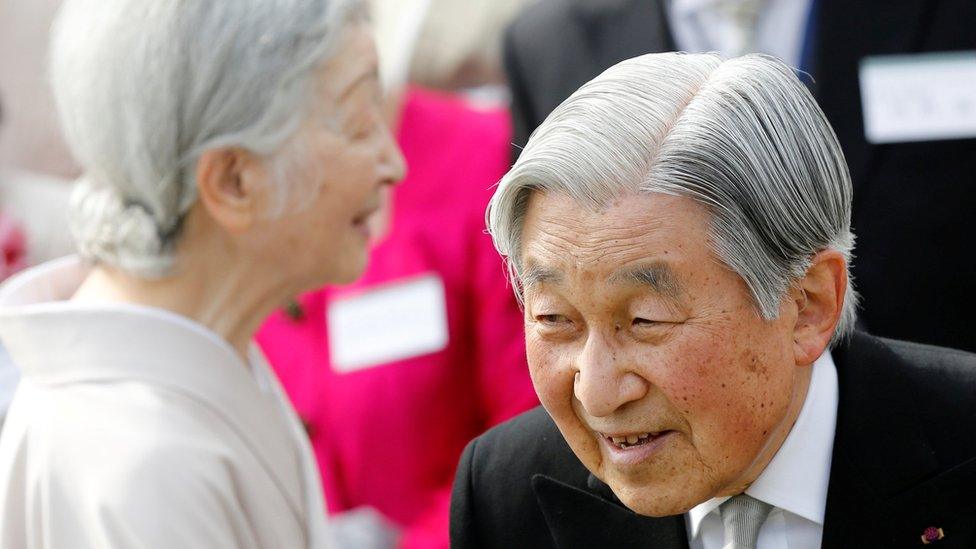
Japan's imperial family
The emperor is a constitutional monarch and Japan's ceremonial head of state. He is a highly symbolic figure in Japan's Shinto religion
Current Emperor Akihito is preparing to abdicate in favour of his eldest son, Crown Prince Naruhito
Only men can inherit the throne. Japan experienced a succession crisis from the late 1990s until 2006, because both the emperor's sons had daughters only. This was ended by the birth of Prince Hisahito
The royal family are not independently wealthy - most of their assets were confiscated after World War Two and they are now funded by the government

Emperor Hirohito's daughters lost their titles under the legislation, as did the current crown prince's sister, Sayako, when she married urban planner Yoshiki Kuroda in 2005.
Her transition from closeted princess to commoner attracted considerable attention. Reports described how she learned to drive and practised shopping independently ahead of her wedding.
The couple used her lump-sum payment (reportedly $1.3m; £1m) to buy a house and she is now a high priestess of the Ise Grand Shrine.
So far Princess Mako's engagement has not been officially announced. But the young woman seems well-equipped for her new status, with two spells of independent living under her belt.
While studying at Tokyo's International Christian University, she spent nine months as an exchange student at Edinburgh University in 2012-13.
A year later, she lived in halls of residence at Leicester University as she completed her Master's in Art Museum and Gallery Studies. She is currently a researcher at a museum in Tokyo and is studying for her doctorate.
"Princess Mako has been the embodiment of an Imperial family member who is close to the public," the Yomiuri newspaper said in an editorial., external "Being an amiable person, she will surely build a cheerful home."
'Unbroken line'
But she will be missed. According to the Asahi newspaper, external, Princess Mako is currently patron of two organisations, has travelled overseas as a representative of the royal family and has attended important imperial functions.
Her official duties must now be shared among a dwindling pool of royals.
At the moment there are 19 members of the royal family. Seven are unmarried women who must leave when they wed. Eleven (four couples and three widows) are over 50. That leaves Prince Hisahito.
He is the youngest of four males in line to the throne. Three of them - Crown Prince Naruhito, his brother Prince Akishino (Fumihito) and Prince Hitachi (Masahito), the current emperor's younger brother, are highly unlikely to have more children.
That could potentially leave Prince Hisahito (and whatever family he might go on to have) with sole responsibility for performing official duties and continuing the imperial line.
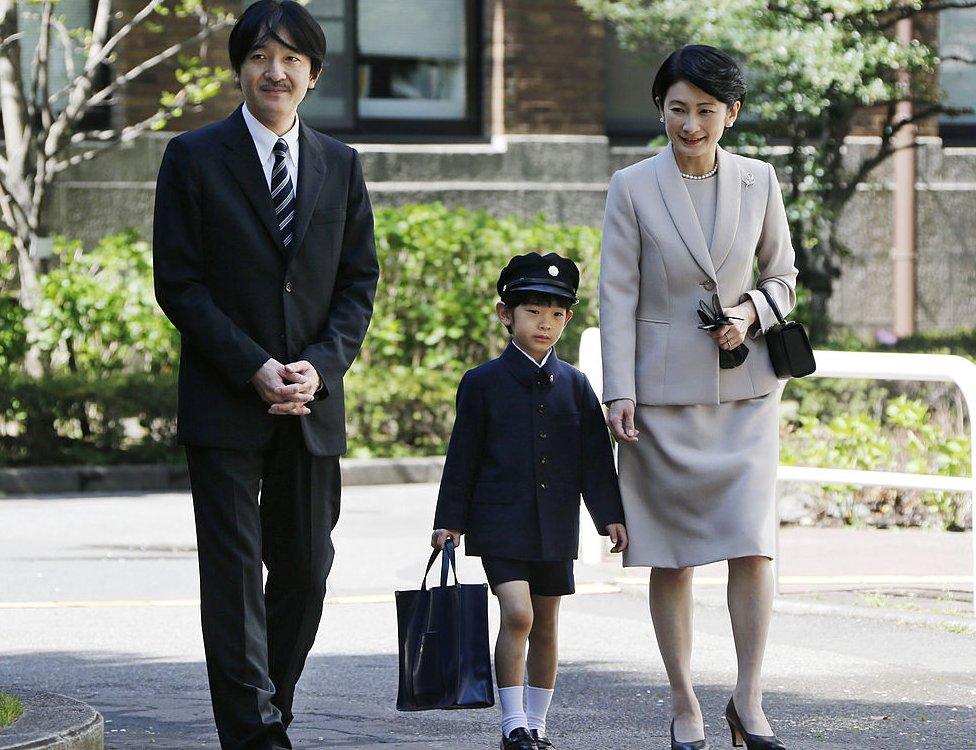
Prince Hisahito, pictured with his parents on his first day at school in April 2013, is the youngest heir to the throne
At the moment, a law allowing Emperor Akihito to abdicate is being prepared. In its editorial, the Yomiuri newspaper said the "creation of female imperial branches should be incorporated" into the law and discussed as a "realistic measure for maintaining the number of Imperial family members".
But that is unlikely to go down well with Japanese conservatives.
"This is all rooted in the concept of the unbroken male blood line - the notion that what makes Japan special is that it has an imperial line that has been passed down through a male lineage, if you believe the mythical version, ever since the Emperor Jimmu in 660 BC," says Professor Ken Ruoff, director of the Centre for Japanese Studies at Portland State University and an expert on the Japanese monarchy.
"This is what the nationalists seize upon and they actually will say things like if the male bloodline is broken, then Japan ceases to exist," he says. "Female blood doesn't count."
Japan has had female rulers in the past, though not for about 250 years. In general they were seen as place-holders until the throne reverted to a male member of the family (though there was one case of an empress passing the throne to her daughter to act as regent for a male heir).
Before the 1947 legal change, the royal family was much bigger, meaning that if one branch could not produce a male heir there were options elsewhere, but that is no longer the case.
In the period before Prince Hisahito was born, when there was no younger-generation heir, there was considerable debate about changing the law to allow women on the throne.
The prime minister of the day, Junichiro Koizumi, said he backed the move. But after Prince Hisahito's birth, discussions stalled.
Watch: The beginning of a real-life fairytale?
Japan's current leader, Shinzo Abe, is a more right-wing figure whose speaks often of national pride, tradition and patriotism.
"Prime Minister Abe has spent a lot of time talking about his desire to make Japan a society that shines for women but he's got this far-right faction that absolutely opposes changing the law to allow a woman to sit on the throne," says Prof Ruoff.
One other idea is restoring royal status to branches that lost it in 1947, providing more male heirs.
Mr Abe, the Yomiuri said, backed this in the past. "It is hard to say the idea has won broad support," the paper pointed out.
But there is public support for allowing women to inherit the throne. According to a Kyodo News survey in early May, external, 86% supported allowing a woman emperor and 59% supported allowing an emperor from the female blood-line.
This potentially leaves the government out of step with popular sentiment.
Whatever happens, the future looks bright for Princess Mako. Of more concern, perhaps, is whether a 10-year-old boy has broad enough shoulders to carry the Japanese monarchy onwards.
Additional reporting: Chika Nakayama

- Published18 May 2017
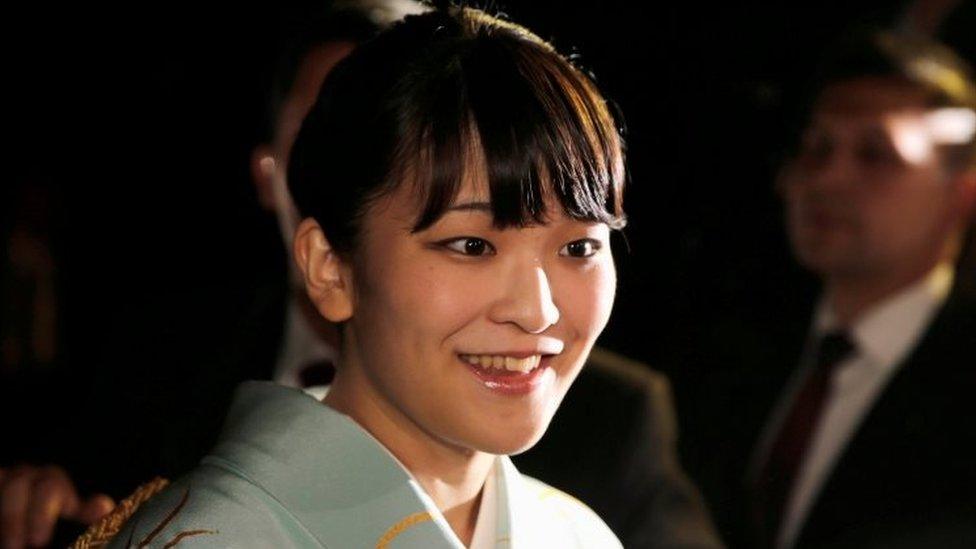
- Published11 January 2017
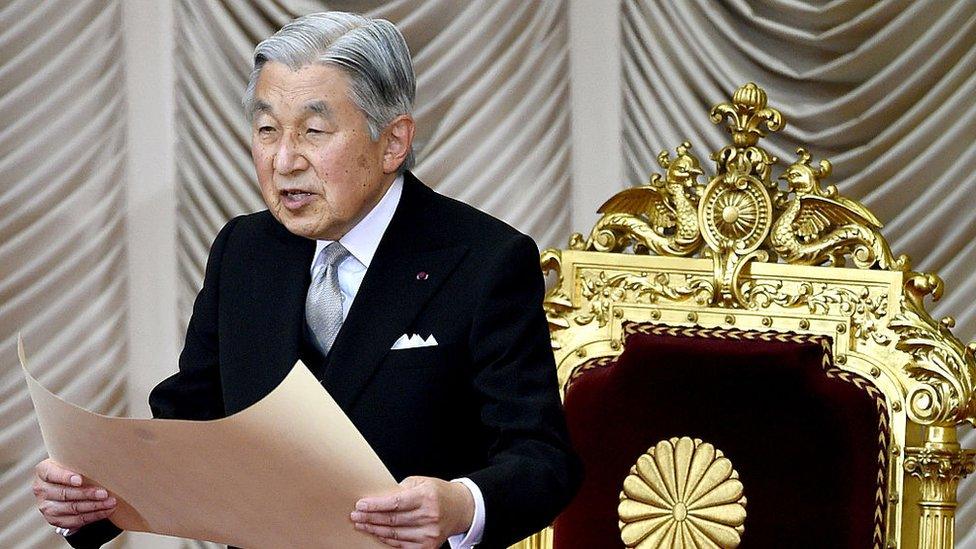
- Published30 April 2019
